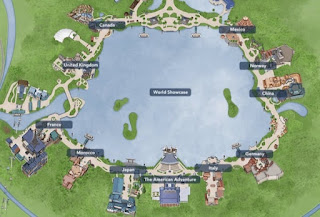 Osaka, which means large hill, has a population of 2.7 million (was up to 3.1 million in 1965) and is the largest component of the Keihanshin (or Greater Osaka) Metropolitan Area, the second largest in Japan, and tenth biggest urban area in the world, with 19 million inhabitants.
Osaka, which means large hill, has a population of 2.7 million (was up to 3.1 million in 1965) and is the largest component of the Keihanshin (or Greater Osaka) Metropolitan Area, the second largest in Japan, and tenth biggest urban area in the world, with 19 million inhabitants.
- From the early beginning of the country, Osaka was traditionally considered to be Japan's economic hub, having a major port in the 7th and 8th centuries, and continuing to flourish during the Edo Period (1603-1867), becoming the center for Japanese culture, with Kyoto and Nara in this region. Our two final stops on this Japan trip are to these two cities.
- Kyoto was the capital of Japan for more than a millennium, from 794 through 1868.
- All changed that year when the capital was moved to Edo, which was renamed Tokyo.
- Osaka was hit hard by U.S. bombing during World War II, particularly just before the end.
- Reconstruction stimulated population growth.
- Osaka hosted the World Expo in 1970, and will again do so in 2025.
- The city's most famous landmark is Osaka Castle, built by Toyotomi Hideyoshi in 1583.
- Is home to Shitenno-ji, the oldest Buddhist temple in Japan, established by Prince Shotoku 1400 years ago.
- Osaka Aquarium Kaiyukan has two whale sharks.
- I first went there more than 30 years ago and saw them.
- However, my stop in 2012 reported that Yu-Chan and Kai-kun were away on vacation, meaning they were sick, and they subsequently died.
- Incidentally, Riyadh, Saudi Arabia was selected to host World Expo 2030, beating our Busan, South Korea and Rome, Italy.
- I was a minor part of a team nearly a third of a century ago to plan for an ambitious mass transit system around Osaka Bay, and my contribution was to internationalize each train station to feature countries, just like in Disney's Epcot Center World Showcase.
- If this effort became reality, Osaka would have thus become the world capital.
- Imagine one station being Chinese. They would bring two real pandas, open restaurants and hotels, etc. The architecture would be from that country.
- Then another from France, etc.
- Thus, more than a dozen mass transit stations, each featuring the lifestyle, cuisine and culture of those regions.
That Lockheed Martin/Disney platform was to be the first step of the Blue Revolution.
The Marriott Miyako Osaka begins on the 38th floor, and goes up to 55.
This is a Mormon hotel, and three religious books are provided in each room.Ended with a pizza and assortment drinks.
Night view from our room.
Walked 4677 steps today.
Goodnight.


















Comments
Post a Comment